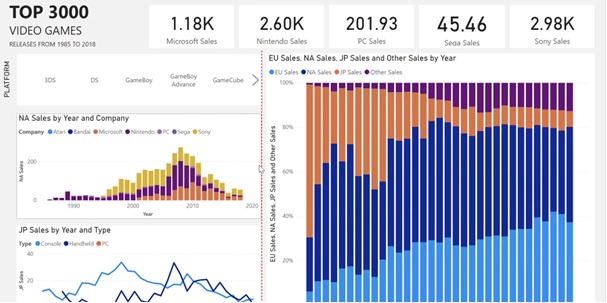You’re probably storing lots of data during your day-to-day business, and most of that data might just be sitting there, doing nothing, mostly acting as a hard to read history log. In fact, that data can and should be the brains of your business. This article takes a brief look at areas where digital transformation can benefit businesses.
If that data is unreliable or of poor quality, don’t lose hope. A technically minded expert in your team can guide you towards simple steps for setting up business processes that can greatly improve the performance of your business.
For those with an idea of what this could entail and who want more detail, you can start by adding validations, provide staff training and then clean what’s already there. This is probably the most important step and generally requires the most effort at the outset.
Businesses that harness the power of their data are far more likely to outperform businesses that don’t. Let’s say you’re looking at ways to improve your customer service experience. What steps should you take? You could take an educated guess, but it would be far better if you tap into the data that you’ve been storing and allow it to guide your decisions.
You might notice that support tickets get resolved faster by certain employees, or certain types of tickets get held up when passing through a certain team, maybe on Mondays you receive many more tickets than other days and need to add additional resources. These simple insights are only limited by your imagination, your data, and the amount of effort you’re willing to give to put your data in the driver’s seat.
Data insights for use within customer service is just an example. The same reasoning can be applied to anything that stores data. Think of all the questions which could be answered using your data! Which of your marketing campaigns has increased revenue the most? Which of your stores is performing best? These types of questions can be expanded as needed, provided you have the data.
Dashboards

Insights can be presented as a dynamic data dashboard. Dynamic dashboards are a set of pages including pie charts, bar graphs, table format reports, maps, KPI gauges etc., which can be set up to be interactive with the help of filters and drill throughs. You can derive trends and patterns hidden in your data, then use them during the decision-making process. Data dashboards can also be accessible across various mobile devices. Imagine the convenience of checking on your business performance from your mobile phone when travelling, without ever requesting an update from your managers and teams at home. Dashboards can be plugged into live data and can be set up in practically any way you wish, depending on your needs. Two notable examples of applications which are used to produce data dashboards are PowerBI and Tableau.
Using data to forecast the future
By implementing the above, your data will be put to better use. You can easily interpret it, observing trends or patterns in the way you run your business, and you can better understand why certain situations have occurred, be they good or bad. Look at the future, that same data can provide predictions based on observed trends and can be crucial for estimating budgets, forecasting sales, and so on.
You can also make use of what we call prescriptive analysis. We know what happened, why it happened, and have a forecast of what is going to happen. The final step is producing an automatically generated solution or suggestion. This could be something simple like unsubscribing a user due to a GDPR issue or targeting a specific audience during a marketing campaign based on a trend. Typically, you should always start with knowing what has happened and why it is happening and then progress towards predictions and/or prescriptions (solutions) as needed.
Data culture
Data is enormously valuable and should be invested in. But only do so if you are willing to change your internal culture towards a data-driven mindset. There are many things you can do to change your work culture, such as hiring or promoting leaders who are data driven and educating employees on how to utilise data. When leaders in your business make decisions, ask them to back it up with data.
Conclusion
Invest in data. Enforce strict controls to ensure new data is clean and clean up what’s already there. Find out what data you have available and how this can be leveraged to provide valuable insights to your business. Reap the benefits.
Get in touch!
If you are interested in learning more or need guidance with data and business implementation contact us today.

